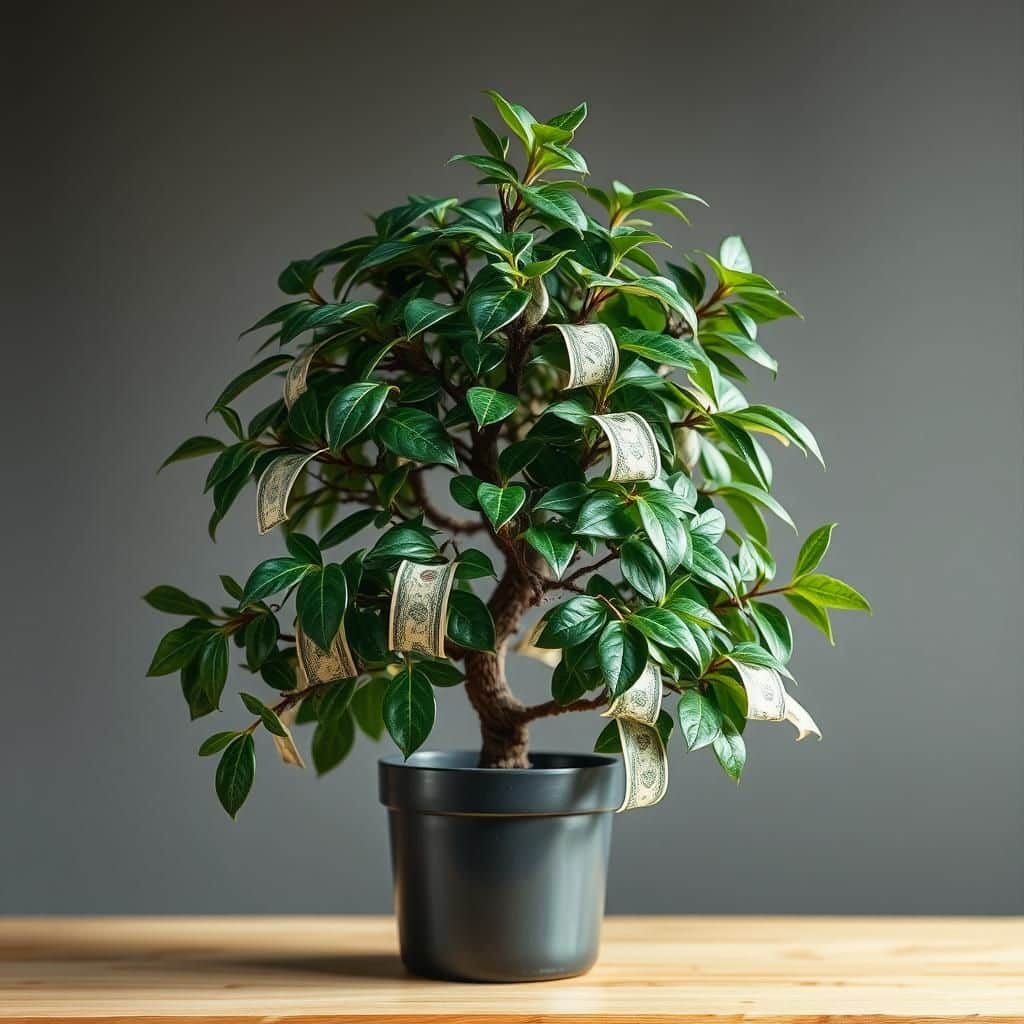What to Give a Sick Money Tree? Essential Care Tips for Reviving Your Plant

Caring for a sick money tree can be a daunting task, but with the right knowledge and techniques, you can revive this beloved houseplant. Known for its resilience and unique appearance, the money tree (Pachira aquatica) is a popular choice among plant enthusiasts. However, various factors can lead to its decline, such as improper watering, inadequate light, and pest infestations. In this article, we will explore essential care tips to help you identify the signs of distress in your money tree and provide the necessary interventions to restore its health and vitality, ensuring it continues to thrive in your home.
What to Give a Sick Money Tree?
When your money tree (Pachira aquatica) shows signs of distress, it's crucial to assess its condition and provide the right care. First and foremost, examine the soil for drainage issues, as overly soggy or dry conditions can lead to root rot or dehydration. Ensure that the plant receives the appropriate amount of water, ideally allowing the top inch of soil to dry out between waterings. Additionally, consider placing the money tree in a location with indirect sunlight, as excess direct light can scorch its leaves. Applying a balanced, diluted fertilizer during the growing season may help boost its recovery, but be cautious not to over-fertilize, as this can further stress the plant. Lastly, check for pests and remove any affected leaves to promote overall health.
Assessing Soil Conditions
Evaluating the soil is a critical first step in determining the health of a sick money tree. A balanced mix that retains moisture yet drains well is ideal. If the soil is compacted or retains too much water, it may lead to root rot. It's advisable to use a mix designed for potted plants that contains peat, perlite, and vermiculite to encourage proper drainage. Repotting the tree in fresh soil can provide a healthier environment and alleviate problems caused by old, used soil.
Watering Guidelines
Proper watering is essential for the recovery of a sick money tree. The rule of thumb is to water the plant when the top inch of the soil has dried out. Be careful to avoid both under-watering and over-watering, as both can contribute to the plant's decline. When watering, ensure that it reaches the roots but does not sit in a pool at the bottom of the pot. Adjust the frequency based on seasonal changes—money trees typically need less water in the winter months.
Light Requirements
The placement of your money tree significantly impacts its health. Money trees thrive in indirect sunlight; positioning them near a window with filtered light is ideal. Avoid placing them in direct sunlight, as this can lead to leaf scorch and further stress the plant. If natural light is limited in your space, consider using a grow light to supplement the requirements, ensuring it mimics the conditions of indirect sunlight.
See also:
Applying Fertilizers
Fertilizers can be beneficial for a sick money tree when applied correctly. During the growing season (spring and summer), using a balanced, diluted fertilizer can encourage growth and recovery. However, it’s crucial to follow the package instructions to avoid over-fertilization, which can lead to nutrient burn. It's often best to wait until the plant shows signs of recovery before resuming a regular fertilization schedule.
Pest Management
Pests can be a significant factor in the decline of your money tree. Common pests may include spider mites, aphids, and mealybugs. Regularly inspect the leaves and stems for any signs of infestation. If you detect pests, treating the affected areas with neem oil or insecticidal soap can help eliminate these issues. Make sure to remove any severely affected leaves to help promote recovery and ensure the overall health of the plant.
| Aspect | Considerations |
|---|---|
| Soil | Lightly compacted, well-draining mix |
| Watering | Water when the top inch is dry |
| Light | Indirect sunlight is preferred |
| Fertilizer | Use a balanced, diluted formula in growing season |
| Pests | Inspect regularly and treat as necessary |
Understanding the Signs of a Sick Money Tree
To effectively revive a sick Money Tree, it is crucial to first understand the signs indicating that your plant is unwell. Common symptoms include yellowing leaves, stunted growth, and root rot. These issues often arise from factors like overwatering, inadequate lighting, or pest infestations. By closely observing your Money Tree and recognizing these symptoms early, you can take swift action to provide appropriate care, ensuring the plant can recover and thrive again.
Identifying Common Issues with Money Trees
Identifying common issues with Money Trees involves inspecting the foliage and soil condition. If you notice brown spots or leaves falling off, it may indicate overwatering or underwatering. Additionally, check the roots for signs of rot, which is often a result of excess moisture in the soil. A thorough examination can help in diagnosing the problem and applying the necessary treatments tailored to the specific issue affecting your plant.
Adjusting Watering Habits for Better Health
Adjusting watering habits is essential for the health of your Money Tree. These plants thrive in well-draining soil and prefer to dry out slightly between waterings. Overwatering can lead to root rot, while underwatering can cause leaves to brown and drop. It's advisable to water the plant thoroughly but allow the top two inches of soil to dry before watering again. Implementing a consistent schedule based on the specific conditions of your environment will greatly improve your plant's overall health.
See also:
Ensuring Adequate Lighting Conditions
Money Trees require bright, indirect light to flourish. Insufficient light can lead to leggy growth and yellowing leaves, signaling that your plant is not receiving enough energy for photosynthesis. To rectify this, place your Money Tree near a window that receives filtered sunlight, or use grow lights if natural light is limited. Ensuring your plant has the right amount of light can drastically enhance its vitality and recovery prospects.
Fertilizing Your Money Tree for Recovery
Fertilizing your Money Tree can provide essential nutrients that may be lacking when the plant is unwell. Using a balanced, water-soluble fertilizer during the growing season can encourage healthy growth and recovery. It's important to follow the manufacturer's recommended dilution rates and avoid over-fertilizing, as this can lead to burn on the roots and leaves. Applying fertilizer sparingly during this recovery phase can help rejuvenate your plant without causing additional stress.
Managing Pests and Diseases Effectively
Managing pests and diseases is crucial for maintaining a healthy Money Tree. Common pests include spider mites, mealybugs, and scale insects, which can drain the plant's energy and lead to further deterioration. Regularly inspecting your plant for any signs of infestation allows for early intervention using methods such as insecticidal soap or neem oil. Addressing these issues promptly will help preserve your plant's health and promote effective recovery from sickness.
Questions from Our Readers
What signs indicate my money tree is sick?
If your money tree appears droopy, has yellowing leaves, or shows brown spots, these may be signs of illness. Additionally, if the leaves are falling off or the plant is not growing as expected, it could indicate that your money tree is experiencing stress or a health issue.
How can I improve the health of my sick money tree?
To improve your money tree's health, first ensure it is in an appropriate location with bright, indirect light. Check the soil moisture; it should be moist but not soggy. Adjusting your watering routine and repotting into fresh soil can help remedy problems.
See also:
Should I fertilize my sick money tree?
It is generally advisable to avoid fertilizing a sick money tree until it shows signs of recovery. Fertilizing a stressed plant can further harm it. Instead, focus on adjusting its environment and care to promote healing before introducing any nutrients.
Can I propagate a sick money tree?
While it is possible to propagate a sick money tree, it is often better to wait until the plant is healthier. Propagating during a time of stress may reduce the likelihood of successful root development. Ensure the mother plant is stable before attempting propagation.

If you want to read more articles like What to Give a Sick Money Tree? Essential Care Tips for Reviving Your Plant, we recommend you check out our Planter category.
Leave a Reply
Related Articles